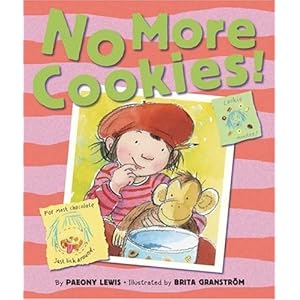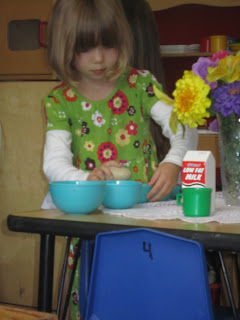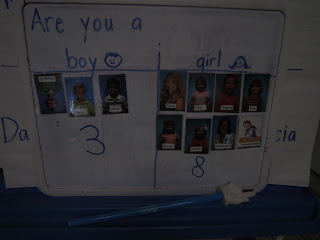More often than not the children are amazing at directing
their own learning and it is up to the teacher to pay attention and seize these
teachable moments.
The other day, I had many engaging centers set up around the
room for our activity time. I do
carefully plan each one with the children’s interests and abilities in
mind.
However, one child became fascinated by a lone sunflower
laying on its side on the science shelves.
He began looking at it with a magnifying glass and then took it to my
assistant to show her that it had fallen off the sunflower plant that we had in
the room. I saw this and went over to
explain that I had brought that one in from a bouquet that I had in my house. In hindsight, I should have directed him back
to the plant, to look for evidence of it breaking off the plant or to compare
this flower to the others on the plant, as this one was much larger than all
the other flowers. He then said he
wanted to look for seeds.
We got him a tray and a pair of tweezers and he began to
look for seeds at one of the tables.
This exploration garnered a lot of attention and soon several other
children wanted to look for seeds. We
got out more trays and more tweezers and scissors to cut apart the flowers…and
began to cut the flowers off our large potted sunflower one by one.
The plant was past its prime, so it was a
good time for this. When we did not find
traditional looking sunflower seeds we were all perplexed. Luckily, I had a couple of books on
sunflowers in our non-fiction library and we searched the pictures. Sure enough we found that the seeds of the
smaller varieties of sunflowers look much different than the large plants, and
we were able to determine that what we were extracting were indeed sunflower
seeds. Many of the children wanted to
take them home to plant. They filled
baggies with some of the seeds, and we kept some for the class to plant in the
spring.
Then they began to look at what was left of the potted
plant. They started asking questions
about the white particles in the dirt.
We also made predictions of what we would find if we lifted up the
leftover stems. Then we checked our
predictions.
Now for all of this, we had to sweep aside the activity that
had been set out at that table, but the spontaneous discovery that ensued was
much more valuable. Had we been
unwilling to change our plans or switch activities in such a flexible manner,
this opportunity would have been lost.
We are not diving into a sunflower unit following this
discovery. The children that were
interested were satisfied with finding the seeds and taking them home. It is okay for this teachable moment to be
just a moment. However, the learning
that is most important from this day will be lasting;
If I want to know about something, I can take it
apart.
I can find books and look in them for information.
I can make a prediction and then find out if my prediction
is accurate.
Sometimes I am wrong and that is okay. What I find is still very interesting.
Learning can be contagious.
And most importantly, when I am interested in something,
my teacher listens to me and validates my interests. Therefore my thoughts must be worthy.
All this learning from a dead flower and some
flexibility.











































































